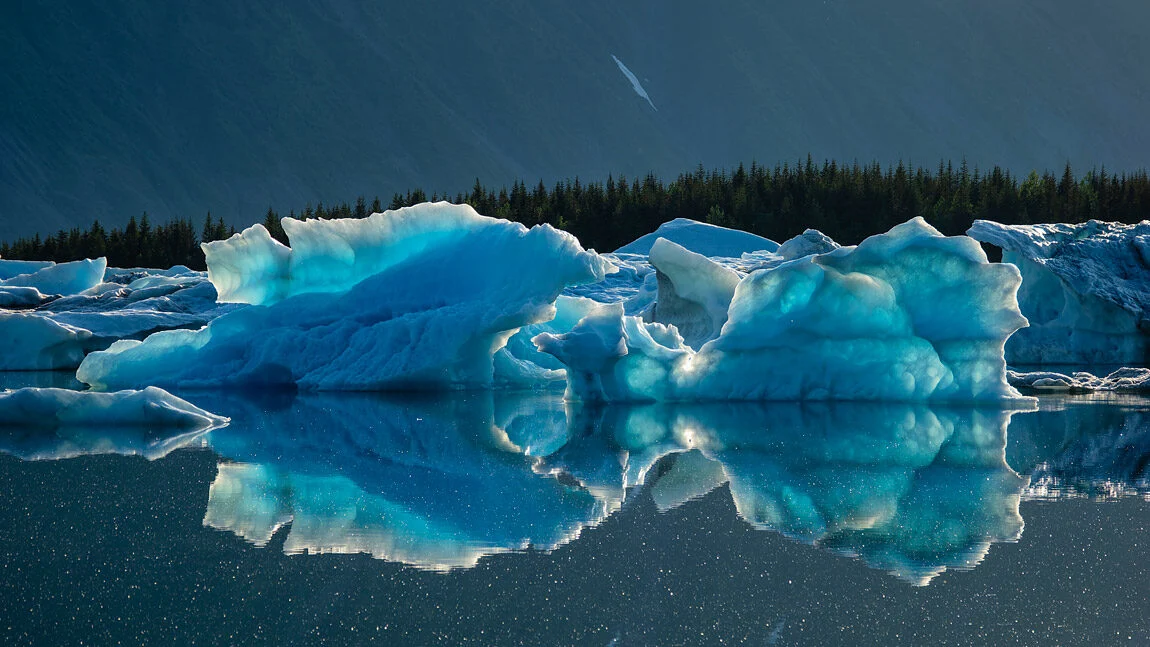The Harding Icefield on the Kenai Peninsula in Southcentral Alaska is the largest contained entirely within the United States. It is part of the Kenai Fiords National Park. At over 700 square miles, the icefield spawns 40 glaciers of varying types, including valley, piedmont, freshwater, and tidewater glaciers. Bear Glacier — the largest within the park at twenty-one miles long — is a tidewater glacier with a proglacier lagoon, a lake that forms between a glacier and its moraine.
Like most glaciers in Alaska and around the world, Bear Glacier is retreating due to climate change. As the glacier shrinks, the terminal edge calves, leaving hundreds of icebergs floating in the large lagoon. Guide services provide kayakers with an opportunity to navigate the beautiful yet potentially dangerous ice structures. Most come for day trips via helicopter from Seward. My wife and I opted to stay overnight in one of two yurts overlooking the lagoon. This gave me more time to photograph the lagoon in a different light during the course of a full day. Besides, being served breakfast, lunch and dinner from the deck of our yurt was a treat we could not pass up. To top it off, we were the only people there overnight and had the entire place to ourselves!
Sunset during this time of year is around 11 p.m. This shot was taken at 9 p.m. in low evening light. I love how the iceberg is backlit. Some of the light is actually passing through the ice, making it appear as if the iceberg is glowing. The intense blue color indicates glacial ice that was deep within the glacier and not yet exposed to oxygen and freeze/thaw cycles. The water is dotted with cottonwood seeds that permeate the air in mid-summer.


